Germany’s big cities are a draw for many travelers, with easy airline connections from many US cities. But getting out of the larger cities is where you can truly experience German culture and cuisine at its best. Here are 14 must-visit towns to add to your itinerary for exploring Deutschland off the beaten path, including where to sleep, what to eat, and how to make the most of your visit.
Image Gallery

About a 30-minute train ride northwest of Munich you’ll find Augsburg, a 2,000-year-old city with Roman roots. The town became the focal point of the western world in the 15th and 16th centuries, influenced by the Fugger and Welser merchant dynasties, then the richest in the world. Today, renaissance monuments and fountains remain as testaments to the city’s glorious history.
Stay: While the central location of Hotel Drei Mohren can’t be beat, it’s the hotel’s day spa that is an attraction even for the locals. Come for an authentic German wellness experience in the saunas and steam rooms. Famous guests have included Mozart, Goethe, and Napoleon.
Eat: Sartory, located at the hotel, is named after the chef who pioneered Swabian-Bavarian cooking. The restaurant is known for its creative twist on regional dishes, such as Zwiebelrostbraten, a roast beef dish with roasted onions.

About a 30-minute train ride northwest of Munich you’ll find Augsburg, a 2,000-year-old city with Roman roots. The town became the focal point of the western world in the 15th and 16th centuries, influenced by the Fugger and Welser merchant dynasties, then the richest in the world. Today, renaissance monuments and fountains remain as testaments to the city’s glorious history.
Stay: While the central location of Hotel Drei Mohren can’t be beat, it’s the hotel’s day spa that is an attraction even for the locals. Come for an authentic German wellness experience in the saunas and steam rooms. Famous guests have included Mozart, Goethe, and Napoleon.
Eat: Sartory, located at the hotel, is named after the chef who pioneered Swabian-Bavarian cooking. The restaurant is known for its creative twist on regional dishes, such as Zwiebelrostbraten, a roast beef dish with roasted onions.

Located almost halfway between Frankfurt and Berlin, Erfurt is the capital city of the state of Thuringia where Martin Luther lived and studied. Its squares and alleyways are dotted with medieval architecture that impress visitors and charm locals, alike.
Eat: If you’re lucky, you may spot owner Alexander Kuehn making chocolate in the kitchen at Goldhelm Schokoladenmanufaktur. But even if chocolate is being made, you can still pick up a Bruecken Trueffel, the ideal sidekick to a glass of red wine.
Must-see: The Krämerbrücke, or Merchants’ Bridge, has the longest series of inhabited buildings on any bridge in Europe. Think Ponte Vecchio with a German twist. Initially built in wood, the bridge was rebuilt in stone in 1325 with 32 buildings remaining. The best view is from the tower of the Church of St. Aegidius.
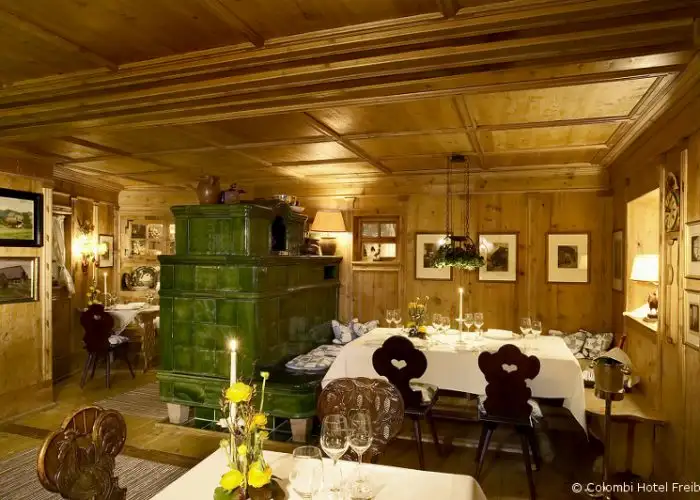
On the western edge of the Black Forest, Freiburg is at the center of the Baden region’s wine growing area. Statistically speaking, it’s the warmest and sunniest spot in all of Germany. Given this advantage, you’ll find an abundance of fresh, locally-grown fruits and vegetables, along with wine and baked-goods at the farmers market, held daily under the shadow of the Freiburg Minster.
Stay: At the family-run, 5-star Hotel Colombi, the owners taking great care to ensure each guest feels like the hotel is a home away from home. Its indoor pool, sauna, steam bath, and solarium combine for the ultimate relaxing getaway, though hiking trails and the old town are just beyond the front doors.
Eat: Since 1982, Zirbelstube has maintained its Michelin-star status, revealing the consistency behind Alfred Klink’s, and now Christoph Fischer’s, seasonal dishes. The pine-paneled restaurant adds warmth to the space, while evoking a traditional German dining room.
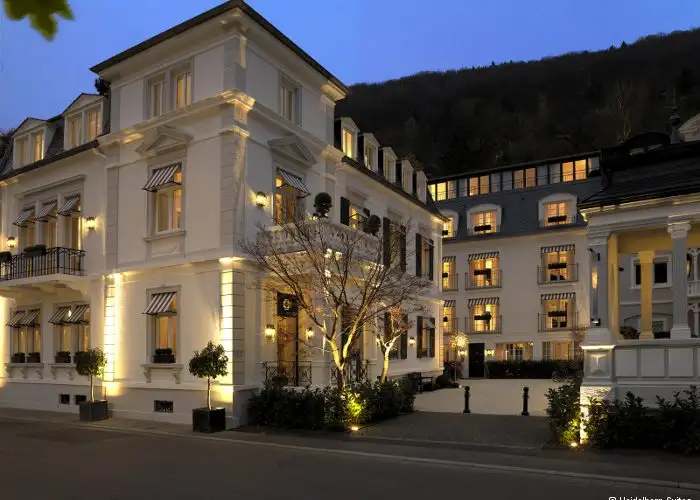
Mark Twain, as evidenced in A Tramp Abroad, was a big fan of Heidelberg, home to Germany’s oldest university. Today, students still give the city a youthful energy, while the riverside setting and hilltop castle add to the romanticism of this storied city.
Stay: The 5-star Heidelberg Suites overlooks the Neckar river with arguably the best views of the Old Town and castle. The boutique hotel is just steps from the Alte Brücke, or Old Bridge, that connects visitors to the historic Altstadt where one will find an abundance of cafes and restaurants. Borrow one of the hotel’s basket-clad bicycles to experience the city like a local.

Koblenz sits right where the Rhine and the Moselle rivers meet. Seemingly impossibly vertical vineyards, rocky cliffs, and forested hillsides provide the scenery for which the romantic Rhine Valley is renowned.
Must-see: Take a cable car ride across the Rhine River, soaking up the views along the way, before exploring Fortress Ehrenbreitstein, part of the Upper Middle Rhine Valley UNESCO World Heritage site.
Eat: For unbeatable panoramas, make dinner reservations at the restaurant on the hillside at Fortress Ehrenbreitstein.
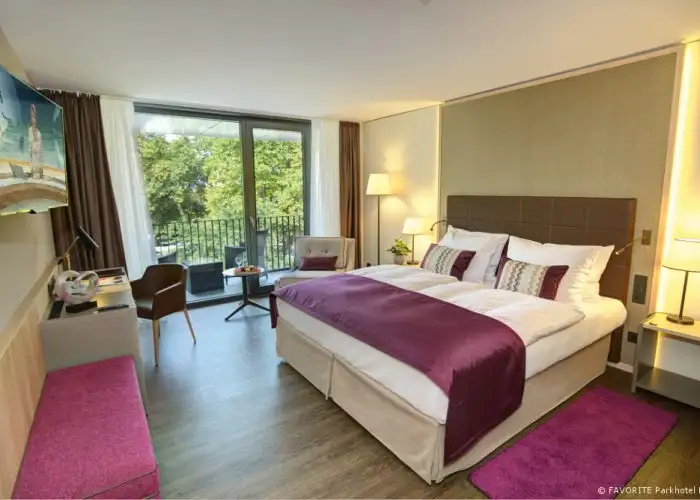
Located across the Rhine River from Wiesbaden, Mainz is a university town known for being home to the Gutenberg press. It’s also the perfect spot to try the region’s wines; Rheinhessen is the largest of the country’s 13 wine regions.
Stay: The family-run Favorite Parkhotel may become your favorite hotel. Abutting city parkland, the hotel has plenty of green spaces for unwinding, including the hotel’s own biergarten.
Eat: Germany’s youngest Michelin-starred chef, Philipp Stein, cooks dishes with a Mediterranean and Asian influences at the Favorite restaurant. The dining room overlooks the Rhine and the city of Mainz, and the view complements the award-winning cuisine.

Called the country’s cycling capital, the city is home to around a half million bikes, equaling about two bikes per resident. Hundreds of miles of bicycle paths make it easy to explore the old town, surrounding parkland, castles, and unique works by international artists throughout the city’s urban spaces.
Stay: Factory Hotel, a member of Design Hotels, is an eclectic mix of old buildings and new design. The property transformed the former Germania Brewery into a vibrant destination for travelers and locals alike. Abutting a lake, the property is surrounded by shops, restaurants, and clubs, including the hotel’s own Grey.

Less than an hour from Muenster, Osnabrueck is located amongst a nature reserve. The old-walled Hanseatic city has a splendid old-quarter with boutique shops, galleries and arts and crafts. It’s also home to the Felix Nussbaum Museum. Designed by renowned American architect Daniel Libeskind (architect of Berlin’s Jewish Museum and the new World Trade Center in New York City), it presents the life and works of locally-born Jewish artist Felix Nussbaum, who perished during the Holocaust.
Stay: The 325 year-old Hotel Walhalla is a half-timbered building in the Baroque style. Over the course of its history, the hotel has welcomed numerous prominent guests from all over the world, including the Dalai Lama.

Potsdam is around a half-hour drive or train ride from Berlin, making it accessible no matter how you’re arriving to the area. A UNESCO World Heritage site, the more than dozen area palaces, most notably Sanssouci and parks in the area line the River Havel and numerous interconnected lakes. Think of this as Berlin’s version of Versailles.
Stay: Hotel Bayerisches Haus, a Relais & Chateaux property, sits in the midst of a forest at the edge of the city. Among the Wildpark, or game park, the property was created by Frederick William IV for his wife Elisabeth; the surrounding parkland reminded her of her home in Bavaria.
Eat: The Michelin-star Restaurant Friedrich Wilhelm at the Bayerisches Haus sources food from local producers and hunters. Chef Alexander Dressel prepares regionally inspired, seasonal dishes that have given the restaurant its gourmet reputation.

Just over 60 miles from both Munich and Nuremberg, Regensburg sits on the Danube River. Its wealth of ancient medieval buildings earned its Old Town UNESCO World Heritage list distinction. And because it was largely spared during World War II, it’s the largest medieval city in the entire country.
Eat: Restaurant Storstad earned a Michelin star and has a 5-course set menu or a-la-carte options. But if you’re looking for something slightly more casual, the restaurant also serves lunch and has a bar menu with dishes like fish and chips in a yuzu aioli, bouillabaisse, and oysters.

Located on Germany’s north east coast, Rostock, a former Hanseatic city celebrating its 800th anniversary in 2018, is off the typical tourist path. But for in-the-know Europeans, it’s an idyllic seaside getaway. Warnemuende, the seaside portion of town, hosts a large beach, lighthouse, and fisherman’s port.
Stay: Yachthafenresidenz Hohe Dune, a 5-star luxury hotel, sits directly on the Baltic Sea, adding an extra maritime flair to its rooms. The resort has a private marina with direct sea access and its location in Hohe Dune makes it a quiet escape. Visitors rave about the wellness and spa, including the resort’s pool
Eat: At the Michelin-star restaurant Der Butt, you can’t get much closer to being on the water without getting your feet wet. The resort’s award-winning restaurant pairs impeccable service with 4- 5- and 6-course menu options. For diners under 30, the restaurant has a special 3-course meal, including aperitif and two glasses of wine, for 59 euro on Tuesdays and Thursdays.

Further west along the Moselle River from Koblenz, nearing the Luxembourg border, Trier is home to the finest Roman relics north of the Alps that belong to the UNESCO World Heritage Sites. 2,000 years ago it was the capital of the Western Roman Empire and known as Augusta Treverorum. Today, the city still features innumerable structures left by the Romans-for these reasons its Germany’s oldest town.
Stay: Becker’s Design Hotel is positioned among vineyards in Trier, benefiting its winemaking tradition that goes back five generations. Its sleek design fits with the more ancient vibe of the city thanks to the use of natural materials, including wood, basalt, and volcanic rock. The lounge and library area make it hard to leave.
Eat: Becker’s restaurant has two Michelin stars with 5- and 7-course menus that change weekly. You may find turbot, rabbit, and venison on the menu, all prepared in unexpected ways. The hotel’s Weinhaus also serves Becker’s own wines alongside other regional pours.
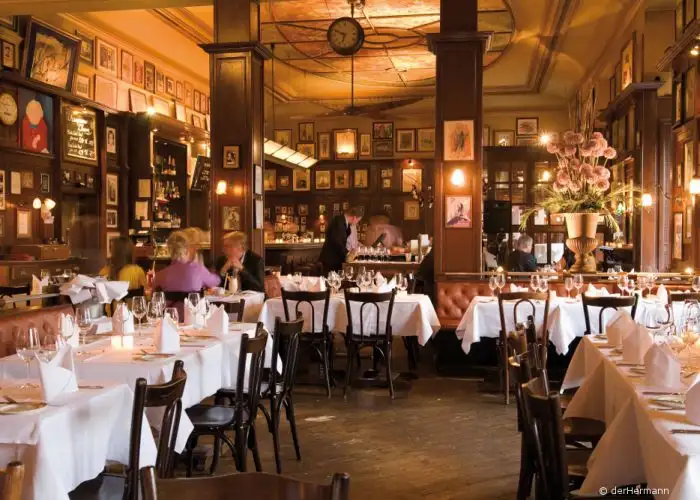
Just across the Rhine River from Mainz on the edge of wine-country, Wiesbaden is a city of grand hotels, luxury villas, tree-lined avenues and spacious parks. With its well-preserved 19th century architecture, cafes and ambience, you’ll immediately understand why this city is special. It’s also one of Europe’s oldest spa towns, with 26 thermal springs bubbling up around the city.
Must-visit: Russian novelist Fyodor Dostoevsky allegedly gambled at Wiesbaden’s tables in the 1800s and today you can still try your luck at the Kurhaus and Casino Wiesbaden. Literally translated to the cure house, the building houses roulette, blackjack, and poker tables under crystal chandeliers surrounded by cherry woodworked walls. The Kurhaus Colonnades house the Kleine Spiel (small casino) with slot machines and a more casual atmosphere.
Eat: Kafer’s gets its décor from Parisian restaurants and French markets, which complement the French bistro-style cuisine. Weather permitting, the restaurant has a terrace overlooking the sprawling Bowling Green, as well as a biergarten in the well-manicured park that abuts the Kurhaus.
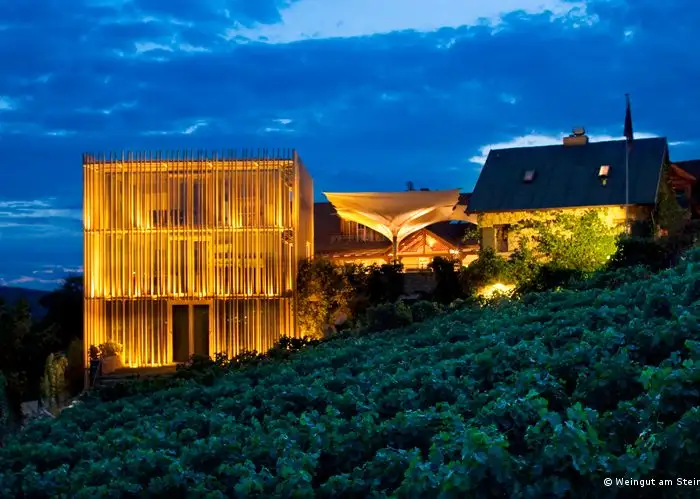
Located on the Main River, Wuerzburg is known for its wine. It’s the capital of the Franconia wine region, renowned for its dry white wines, and vineyards crawl up the steep hillsides. You’ll find world-famous wines here alongside smaller, equally palatable, family-produced wines.
Stay: The 5-star Wine Estate Guesthouse and Restaurant is the place to go for what the hotel calls sightsleeping and sighteating. The sightseeing begins at the guesthouse, set in the midst of the winery, giving visitors a look into daily operations. The apartment’s three rooms, tucked behind a limestone façade, overlook the oak-and-glass winery building.
Eat: Reisers, the estate’s restaurant, serves lighter fare alongside heartier dishes that complement the full range of wines produced here. Opt for the 5-course menu with wine pairing. Wine tasting sessions in the cellar or in the restaurant’s wine bar will help you find your favorite bottle.
We hand-pick everything we recommend and select items through testing and reviews. Some products are sent to us free of charge with no incentive to offer a favorable review. We offer our unbiased opinions and do not accept compensation to review products. All items are in stock and prices are accurate at the time of publication. If you buy something through our links, we may earn a commission.
Related
Top Fares From
Today's Top Travel Deals
Brought to you by ShermansTravel
Shop and Save with Country Inns...
Patricia Magaña
 Hotel & Lodging Deals
Hotel & Lodging Deals
$229 -- Chicago: Discounted Rates and...
Francesca Miele
 Hotel & Lodging Deals
$229+
Hotel & Lodging Deals
$229+
$188 -- Honolulu: Save on Oceanview...
Abigail Lamay
 Hotel & Lodging Deals
$188+
Hotel & Lodging Deals
$188+




